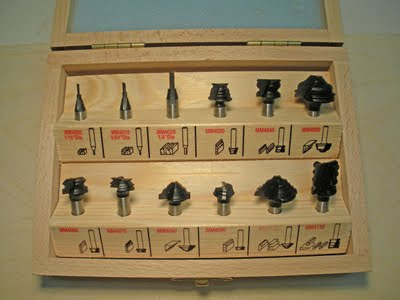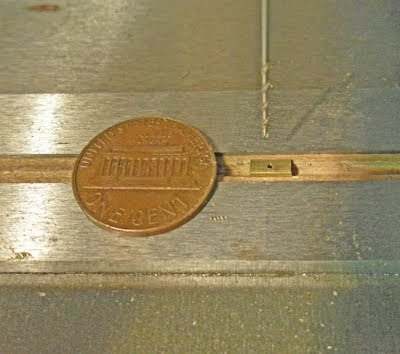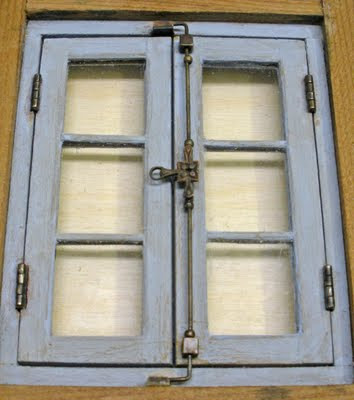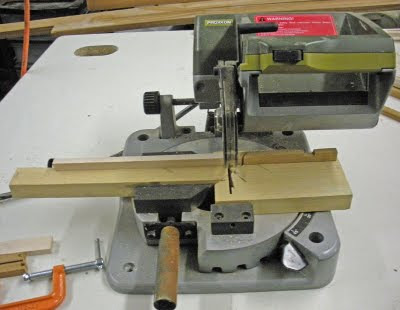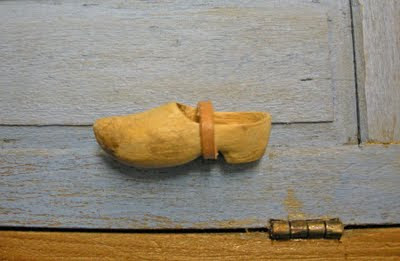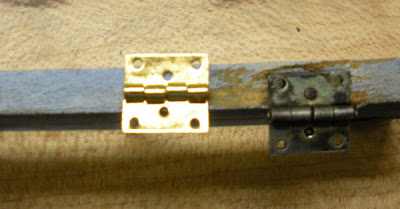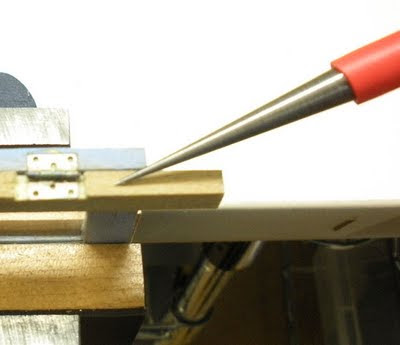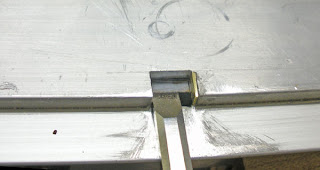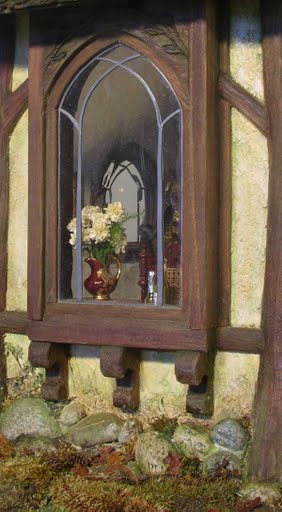 |
| photo copyright Karin Corbin 2009 |
When I went into my files today looking for a photo I fell in love all over again with one of my own pieces. It is funny how that can happen. Often when I look at various photos I have taken I think "oh I wish I had done that differently or better" but now and again I feel "oh I got that just right". Well I got almost all of it just right, there is one small detail that bothers me a bit and I want to make that part over again but I can't so I have to accept it the way it is. This is the curse of being an artist.
The photo above is of the bay window on my Acorn Cottage house. The leading on the window is made from the adhesive back lead that is used for weighting putting irons for the sport of golf. It starts wide at the bottom and then tapers to being thinner at the top where it branches out. This window repeats the theme of the gothic arches of the trees which are the framework of the structure.
At first you might think looking into the window that somehow its shape is reflected in there but you are simply looking at and through the little window on the other side of the house by the front door. It too has the same leading pattern in the shape of a tree. Looking into the dollhouse through this window you can clearly see the slight distortion from the hand poured glass I used.
The carving of the branches in the header over the window continues the line of the branches of the trees from the corners of the house. I like the flow of that and the leaves on the tips of the branches. I have always loved the shapes of leaves. I don't recall planning that particular design detail to happen, I think it is one of those happy accidents that should have been in the plans. I never noticed that it had happened until just a few moments ago when writing up this description.
The natural boulders of real rock and the ground covering of natural moss and tiny bits of real branches and real fallen leaves all add to the feeling of the forest setting. The small vine on the base is a bit of wooly thyme. Watery thin acrylic paint tints the moss and the vine to keep them green forever. I have not taken the time to learn to make flowers from paper or fimo. The flowers in the pitcher on the sill are real dried flowers and they look perfect to me as they are perfect flowers.
Yes, sometimes our visions do become the reality we intended, this was one of those times and one of those photos where the magic did get captured.
If you come to the N.A.M.E (National Association of Miniature Enthusiast) convention in Seattle Washington USA in the summer of 2010 you can see this dolls house in person. The owner of the cottage will have it on display. It will be fun to see how she has chosen to decorate the interior. I will enjoy the chance to visit it and remember the fun and the struggles I had in creating it. Now and again I get to enjoy visiting some of the special real life houses I have owned and then recreated to my personal visions. The owners always have a great time talking about the magic of those places.




